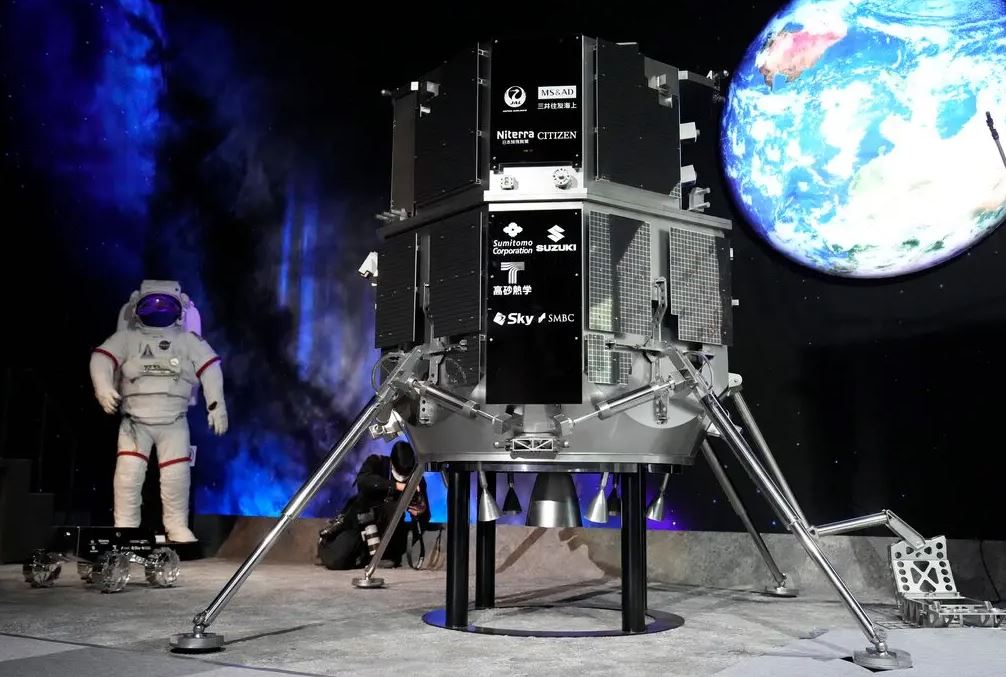A tiny Japanese robotic spacecraft that was sent to the moon has been lost in orbit. Data analysis indicates the vehicle ran out of fuel during final approach, resulting in a hard landing on the lunar surface.
The Japanese-built Hakuto-R Mission 1 lander descended from lunar orbit after its main engine was ignited. Atlas Crater is a 54-mile-wide region in the northeast quadrant of the near side of the moon, and the lander, which is roughly 7.5 feet tall, was scheduled to land there on Tuesday at 12:40 p.m. Eastern time.
However, following the spacecraft’s impact, all contact with it was lost. A group of young engineers from all over the globe, working for Ispace, huddled in a control room in Tokyo, staring at their displays with worried looks on their faces, as seen on a live video broadcast from the firm.
The spacecraft obviously overestimated its height, which necessitates more examination. According to the data, it was likely still in the air when it should have been on the floor.
The Hakuto-R spacecraft lifted out in December and arrived in lunar orbit in March through a convoluted but energy-efficient route. Engineers have spent the last month verifying the lander’s functionality in preparation for the landing attempt.
With the Ispace lander, governments, academic institutes, and private corporations might have taken the first step towards a new era of space travel by transporting scientific experiments and other goods to the moon.
This means that other firms will have to start the move to lunar transport later this year. The United States is planning to send two commercial landers to the moon in the next several months, using funding from NASA.
Since it is expected to be cheaper for NASA to charter commercial spacecraft to transport experiments and equipment to the moon than to construct its own ships, NASA developed the Commercial Lunar Payload Service Programme (CLPS) in 2018. NASA also envisions the development of a lunar business sector that would serve to further drive down prices via more competition. Transportation to and from the International Space Station was modelled in part after this programme.
Next year, Ispace will launch a second mission with a lander almost identical to the first. NASA has contracted Draper Laboratory in Cambridge, Massachusetts to lead a CLPS mission in 2026 using a bigger Ispace lander to deliver cargo to the moon’s far side.
The payloads of two countries, Japan and the United Arab Emirates, were destroyed when the lander crashed. In order to test a transformable lunar robot with two wheels, the Japanese space agency JAXA despatched a miniature rover from the Mohammed Bin Rashid Space Centre in Dubai to investigate the landing site. Each would have become their country’s first robotic explorer on the moon.
NGK Spark Plug Company’s solid-state battery test module, Canadensys Aerospace’s 360-degree cameras, and a flight computer powered by artificial intelligence were also on board.
Both the United States and the Soviet Union were able to land robotic spacecraft on the moon during their space race more than 50 years ago. China has successfully returned three spacecraft to Earth from the moon in recent years.
The Israeli NGO SpaceIL’s Beresheet mission failed in April 2019 when a command delivered to the spacecraft accidentally shut down the main engine.
About a mile above the surface, India’s Vikram lander veered off course and fell silent eight months later during a landing attempt.
It might take some time to decipher the information transmitted back from the spacecraft if the Ispace lander does really crash. The crash sites of Beresheet and Vikram were ultimately spotted by NASA’s Lunar Reconnaissance Orbiter, and M1’s final resting place in the Atlas Crater may be uncovered in a similar fashion.
When it comes to private space companies, Ispace isn’t the only one having a rough start to 2023. First-ever launches of new rocket types by SpaceX, ABL Space Systems, Mitsubishi Heavy Industries, and Relativity all ended in failure. The most recent rocket launch by Virgin Orbit was a failure, and the corporation filed for bankruptcy as a result; nonetheless, the company is still working towards a future launch.
Meanwhile, the number of successful launches is at an all-time high, with dozens of Falcon 9 rockets launched by SpaceX in 2023 alone. In addition, an ESA probe was sent to Jupiter by Arianespace’s rocket.

